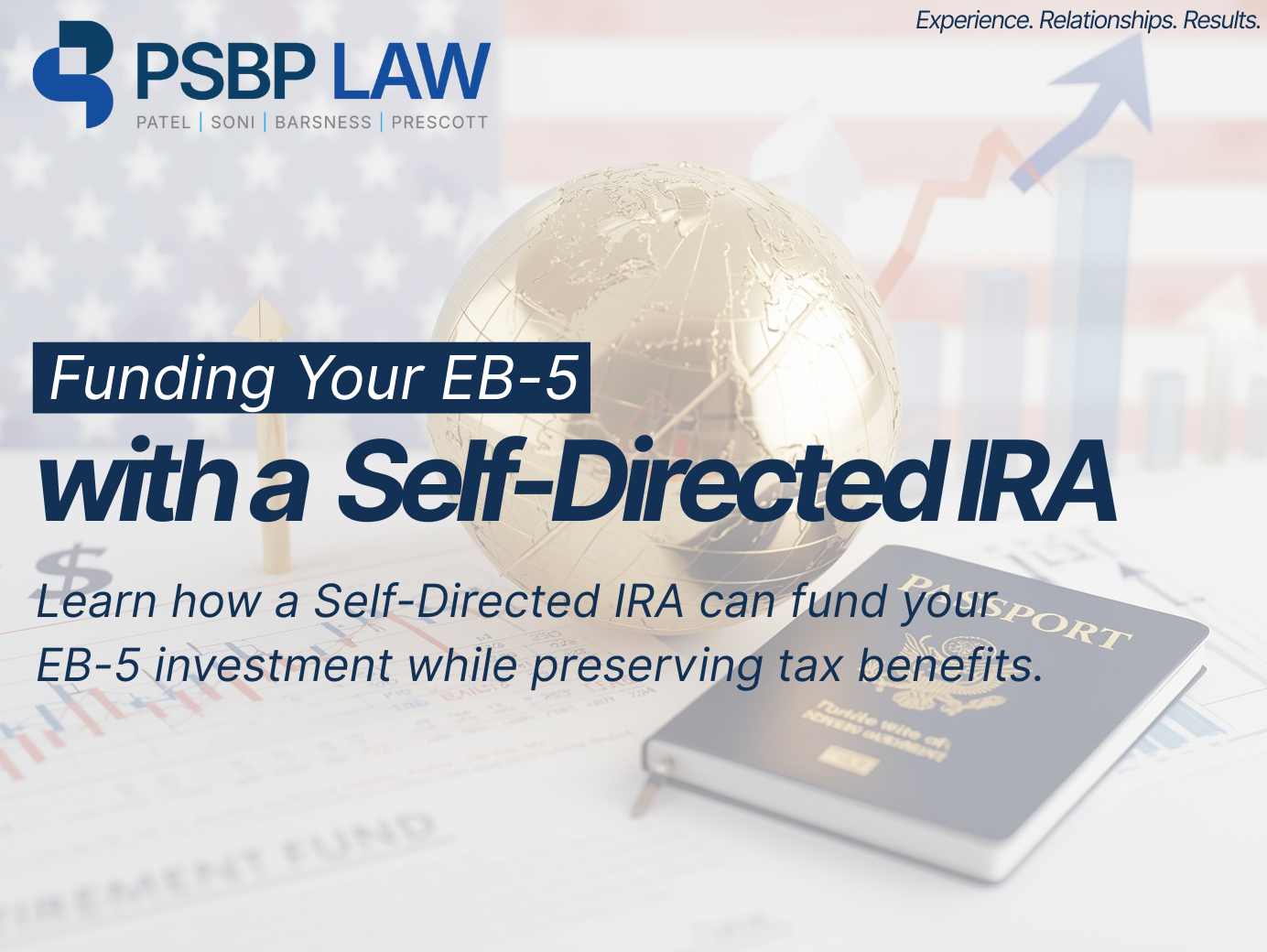Funding an EB-5 investment with personal salary savings or business profits is common. However, more investors are now turning to less traditional funding sources, such as retirement accounts. In particular, using a Self-Directed Individual Retirement Accounts to fund an EB-5 investment has become increasingly popular.
What is a Self-Directed IRA?
A Self-Directed IRA is a tax-advantaged retirement account that allows investors to hold a much broader range of assets than traditional IRAs. Unlike standard accounts limited to publicly traded stocks, bonds, and mutual funds, a Self-Directed IRA can invest in alternative assets, such as real estate, private equity, or even EB-5 qualifying investments.
The key distinction is control. While the account retains the same tax benefits as a traditional or Roth IRA, the investor, not the financial institution, directs the investment decisions.
What Accounts Can Fund a Self-Directed IRA?
Several types of retirement funds can be rolled over or transferred into a Self-Directed IRA, including:
- Traditional IRAs
- Roth IRAs
- 401(k) plans from previous employers
For EB-5 purposes, each of these accounts, and the Self-Directed IRA itself, must be entirely sourced and documented to meet USCIS’s source of funds requirements.
That means the investor must show the lawful origin of the funds that initially went into the retirement accounts (for example, salary deposits, employer contributions, or previous rollovers), as well as the lawful transfer path from those accounts to the Self-Directed IRA and, finally, to the EB-5 investment.

Why can only the EB-5 Investor use their Self-Directed IRA for EB-5?
Although EB-5 rules allow spouses to pool personal funds toward the principal applicant’s investment, only one individual can use a Self-Directed IRA toward an EB-5 investment. That individual must be the primary applicant.
This limitation arises because a Self-Directed IRA investment creates a single investor subscription. If multiple individuals tried to use their separate IRAs for a single EB-5 investment, there would be multiple IRA subscriptions associated with a single EB-5 application, which would conflict with program requirements.
EB-5 regulations require one qualifying investor to make a single minimum investment of at least $800,000 (or $1,050,000 in non-TEA projects). The Self-Directed IRA has its own distinct legal and custodial structure, so it cannot be combined with another person’s IRA or personal funds within the same EB-5 subscription.
Increasing Popularity in EB-5
Self-Directed IRAs have become a favored option for many EB-5 investors for several reasons:
- Tax Advantages: Since the funds remain in a tax-advantaged account, any gains realized from the EB-5 investment generally grow tax-deferred (in a traditional IRA) or tax-free (in a Roth IRA).
- Growing Familiarity Among Custodians and EB-5 Projects: More custodians now understand EB-5 requirements, simplifying the administrative process. Likewise, more EB-5 projects are establishing relationships with approved custodians to accept Self-Directed IRA investments.
Using a Self-Directed IRA (SDIRA) for an EB-5 investment can be a powerful strategy, enabling investors to leverage their retirement savings in a compliant and tax-efficient manner. However, it requires careful coordination among the investor’s IRA custodian, the EB-5 project, and immigration counsel to ensure the investment properly reflects a single investor. All funds must be fully traceable from the originating retirement accounts to the final EB-5 investment, and the transaction must comply with EB-5, SEC, and IRS regulations.
For guidance on using a Self-Directed IRA for your EB-5 investment, contact 📧 Rakesh Patel at rpatel@psbplaw.com or Jacqueline Trevino at jtrevino@psbplaw.com